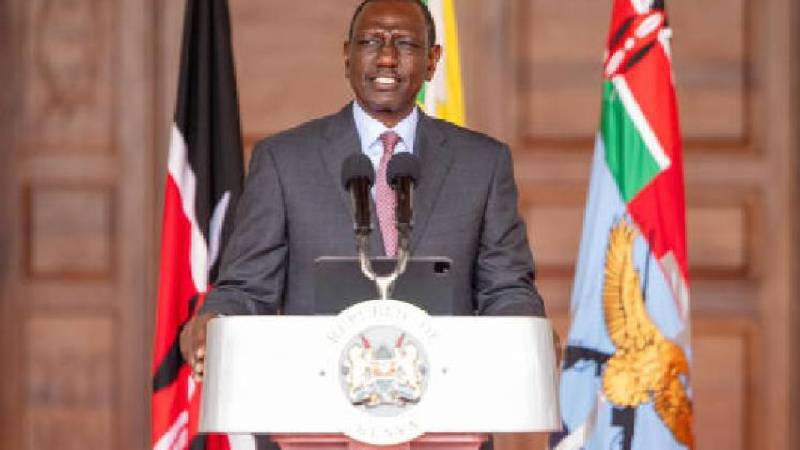By JOSEPH ALUOCH
The Kenyan health system is currently struggling to cope with the rising cost and demand for quality health care services, against the backdrop of a shortage of skilled health care professionals. There is therefore a compelling need to narrow the gap between vision and reality.
The e-Health strategy seeks to set in motion the process of closing this gap by harnessing ICT for improved healthcare delivery. E-Health’s ability to transcend sociopolitical boundaries holds the potential to create a borderless world for health systems and health care delivery.
E-health, defined as the "use of information and communications technologies (ICT) in support of health and health-related field, including health-care services, health surveillance, health literature, and health education, knowledge and research," has the potential to improve health service efficiency, expand or scale up treatment delivery to thousands of patients in developing countries.
Medical specialists
There is an acute shortage of medical specialists in many developing countries. One method that has been used successfully to extend the reach of medical specialists is telemedicine. Telemedicine is rapidly becoming an integral component in the delivery of modern healthcare regardless of geographic or social-economic status.
Telemedicine is a method by which patients can be examined, investigated, monitored and treated, with the patient and the doctor in different physical locations. In telemedicine, one transfers the expertise, not the patient.
A major goal of telemedicine is to eliminate unnecessary traveling of patients and their escorts. However, the traditional approach to telemedicine relies on real-time video interaction between the specialist and the referring physician (and patient).
Digital imaging has extended the reach of this technology in developed countries, but it remains uneconomic in remote and resource poor areas. However, medical diagnosis and management can be achieved with the use of textual descriptions and still images.
This store-and-forward approach to telemedicine simulates the working patterns of radiologists, pathologists, and those of certain clinical specialties such as dermatology, infectious disease and ophthalmology.
People living in underserved areas struggle to access timely and quality medical care. Residents of these areas often have substandard access to specialised health care, because physicians are likely to be located in urban areas of concentrated population.
Rural areas
As a result, the patients living in rural areas have to travel to big cities where large and specialised medical complexes are located. Because of the recent innovations in computing and telecommunications technology, many elements of medical practice can now be accomplished even when the patient and health care provider are geographically separated.
In Kenya, telemedicine systems are not in wide use due to the high cost and complexity of the required technology. Lack of these systems has serious implications on patients who live in rural areas.
Information and communication technologies (ICTs) are increasingly providing us with the tools and knowledge we need to improve health care, enabling solutions that benefit patients as well as healthcare professionals and institutions in both the private and public sectors worldwide.
Stay informed. Subscribe to our newsletter
E-health can serve as a vehicle for the transformation of health conditions in the developing world, particularly for those living in rural and remote areas. Improving access to health care services in developing countries through ICTs has been receiving great attention in recent times.
Poor infrastructure
Challenges to the effective implementation of the e-health include the lack of an e-health policy; inadequate infrastructure and equipment; insufficient human resources and skills as well as low funding to the sector; low awareness; insufficient /unreliable power supply as well as inadequate legislation.
The implementation of e-health in the health sector in Kenya can envision efficient, accessible, equitable, secure and consumer friendly healthcare services enabled by ICT.
To actualise this vision, there is need to promote and deliver efficient healthcare services to Kenyans and consumers beyond Kenya’s border, through the use of ICT.
Kenya faces steady growth in the prevalence of chronic diseases, along with a continued burden from communicable diseases.
"Mobile" health, or m-health – use of mobile technologies such as cellular phones to support public health and clinical care – offers promise in responding to both types of disease burdens.
Mobile technologies are widely available and can play an important role in health care at the regional, community and individual levels.
When used to monitor inventories, these systems can save lives, and provide accurate information for planning, especially in areas where hand-compiled data are often years out of date.
With the rapid growth of the e-health in developing countries, there is clearly an urgent need for solid evidence of its impact to justify and guide the investment of resources in such systems.
—Dr Aluoch is a physician consultant
 The Standard Group Plc is a
multi-media organization with investments in media platforms spanning newspaper
print operations, television, radio broadcasting, digital and online services. The
Standard Group is recognized as a leading multi-media house in Kenya with a key
influence in matters of national and international interest.
The Standard Group Plc is a
multi-media organization with investments in media platforms spanning newspaper
print operations, television, radio broadcasting, digital and online services. The
Standard Group is recognized as a leading multi-media house in Kenya with a key
influence in matters of national and international interest.
 The Standard Group Plc is a
multi-media organization with investments in media platforms spanning newspaper
print operations, television, radio broadcasting, digital and online services. The
Standard Group is recognized as a leading multi-media house in Kenya with a key
influence in matters of national and international interest.
The Standard Group Plc is a
multi-media organization with investments in media platforms spanning newspaper
print operations, television, radio broadcasting, digital and online services. The
Standard Group is recognized as a leading multi-media house in Kenya with a key
influence in matters of national and international interest.







